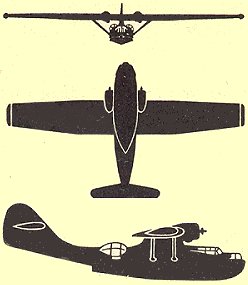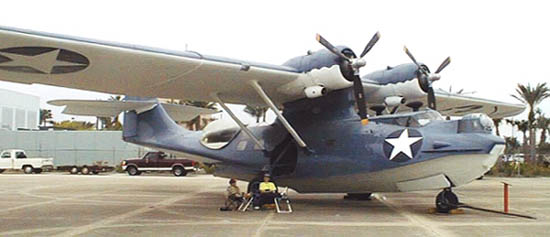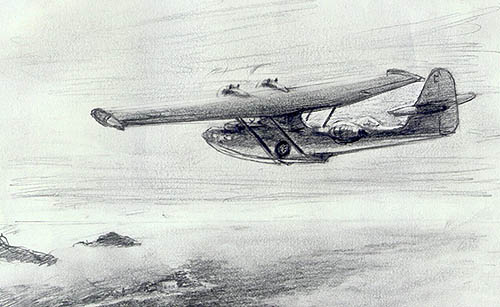PBY Catalina
Today, the last great seaplane. The University of Houston's College of Engineering presents this series about the machines that make our civilization run, and the people whose ingenuity created them.
Suppose you were asked to name the airplane you find most beautiful. That question's a lot less interesting today than it would've been fifty years ago. Nowadays, how many of us can tell two jet airplanes apart? Airplanes were far more fun when we were still casting about, trying to decide what form was best.
I have some favorites: a series of wonderfully graceful de Havilland Moth biplanes dominated private use after WW-I. And for commercial transport, who doesn't love the old DC-3?
One of my less-known favorites is the versatile Catalina seaplane. It was a fine solution to a compound design problem: A sea-plane needs a seagoing hull, with the wing and propellers mounted high enough to avoid splashing water. One solution was a tall hull. Long-legged pontoons were another. Both offered high drag, and made seaplanes inherently slow. In commercial passenger ser-vice, none flew much faster than two hundred miles per hour.
In 1928, Consolidated Aircraft Corporation began a special series of seaplanes. Their low flat bodies rode in the water with a wing and two engines supported above. The 28-passenger commercial version was in service for years and, by 1935, that basic design had evolved into the Navy's PBY Catalina.

It was a sleek airplane, whose high wing rode above its trim body on a streamlined pylon. Two engines were mounted up on the wing. Outrigger pontoons stabilized it in the water, and in flight they retracted to form wingtips. If ever a machine displayed the marriage of beauty and function this one did.
The Catalina kept evolving for thirteen years. In its various forms, it typically had a range over two thousand miles at speeds up to 170 miles per hour. Many were eventually fitted with retractable wheels, so they could function on either land or water.
Over three thousand of these airplanes were built, and they had fine staying power. The 1980s found a hundred or so still in service. During WW-II, they were rigged for bombing, strafing, and torpedo runs. They saw a good deal of military service. But they were vulnerable -- both to enemy fighters and antiaircraft fire.
However, they were unsurpassed in patrol work, and in search and rescue missions. So, when the Navy quit using them, soon after the war, they went on working. The US and Canada modified them to drop water on forest fires. The Danes used them to serve remote locations in Greenland. A converted
four-engine version carried sixteen passengers. Some even became personal flying yachts.
Catalinas served Brazil, Argentina, and Mexico, as well as the US Coast Guard. We have one down at Galveston's Lone Star Flight Museum. I go to visit it. It's large, buoyant, and solid -- just the airplane to fetch any of us out of the sea. I feel secure just looking at this graceful, now-almost-forgotten, old seagull.
I'm John Lienhard, at the University of Houston, where we're interested in the way inventive minds work.
(Theme music)
W, E, Scarborough and D. Greer, PBY Catalina in action, Aircraft Number 62, Squadron Signal Publications, Inc., Carrollton, TX.

Consolidated PBY-5A Catalina at the Lone Star Flight Museum, Galveston
(photo by John Lienhard)

Sketch of a PBY-5A Catalina in flight by Continental jet pilot Jonathan Frank